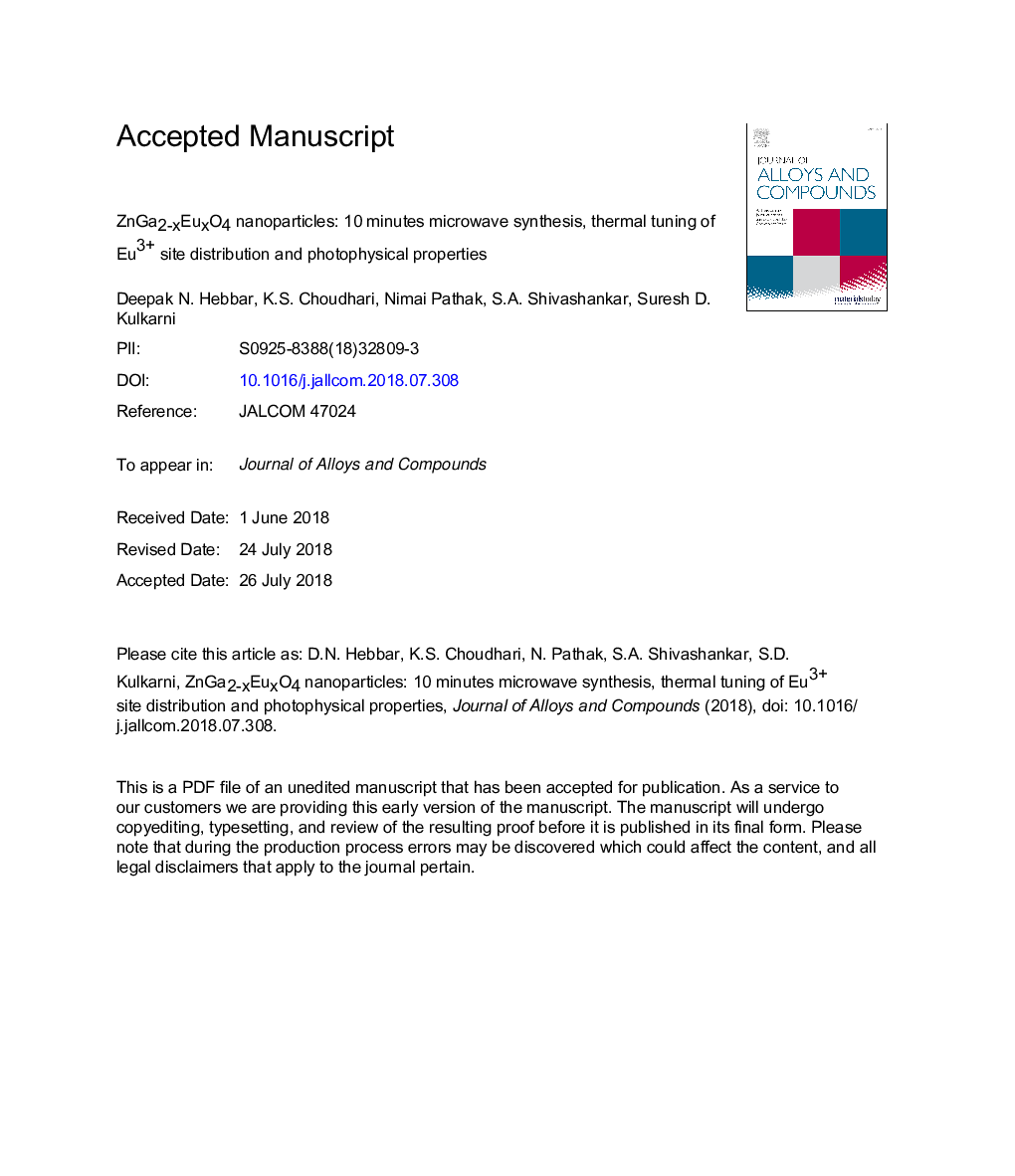| Article ID | Journal | Published Year | Pages | File Type |
|---|---|---|---|---|
| 7990246 | Journal of Alloys and Compounds | 2018 | 26 Pages |
Abstract
Microwave-assisted synthesis of red-emitting ZnGa2-xEuxO4 (xâ¯=â¯0.005, 0.008, 0.010, 0.012, 0.015) nanoparticles is reported. Salient features of this method are: 10â¯min are sufficient to obtain well-crystallized, phase-pure nanoparticles; synthesis upto 2â¯g/batch can be accomplished with high yields (>90%) at a low temperature of 200â¯Â°C; the obtained nanoparticles are near-spherical and of â¼7â¯nm size as seen by HR-TEM; as-prepared nanoparticles show intense red emission at 615â¯nm due to the 5D0 â 7F2 transition, when excited at 395â¯nm. The structural and optical properties of the ZnGa2-xEuxO4 were studied by XRD, HR-TEM, FE-SEM, FT-IR and time-resolved photoluminescence (PL) spectroscopy. ZnGa1.99Eu0.01O4 nanoparticles, which showed the most intense red emission, were studied for the effect of annealing (in air) on their optical properties. Annealing at up to 1000â¯Â°C (i) enhanced crystallinity and the crystallite size increased from â¼7â¯nm in the as-prepared material to â¼46â¯nm (ii) enhanced emission intensity, and moved the CIE coordinates towards red. Photoluminescence decay curves displayed two lifetimes, implying the distribution of Eu3+ (i) on particle surface (ii) within the host lattice; the distribution gradually changes with annealing. The peak fitting of the emission spectra implies C2v site symmetry around Eu3+. A detailed Judd-Ofelt analysis has been presented. The samples annealed at 600-800â¯Â°C showed â¼58% quantum efficiency. The color purity could be increased to 87% by varying the Eu3+ content. Our report demonstrates the efficacy of swift microwave-assisted synthesis (10â¯min) in providing a red phosphor of high color purity suitable for LEDs and display applications.
Related Topics
Physical Sciences and Engineering
Materials Science
Metals and Alloys
Authors
Deepak Hebbar N., K.S. Choudhari, Nimai Pathak, S.A. Shivashankar, Suresh D. Kulkarni,
